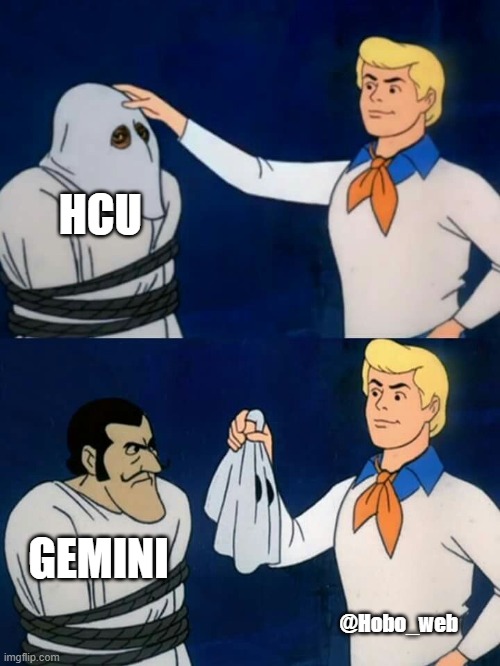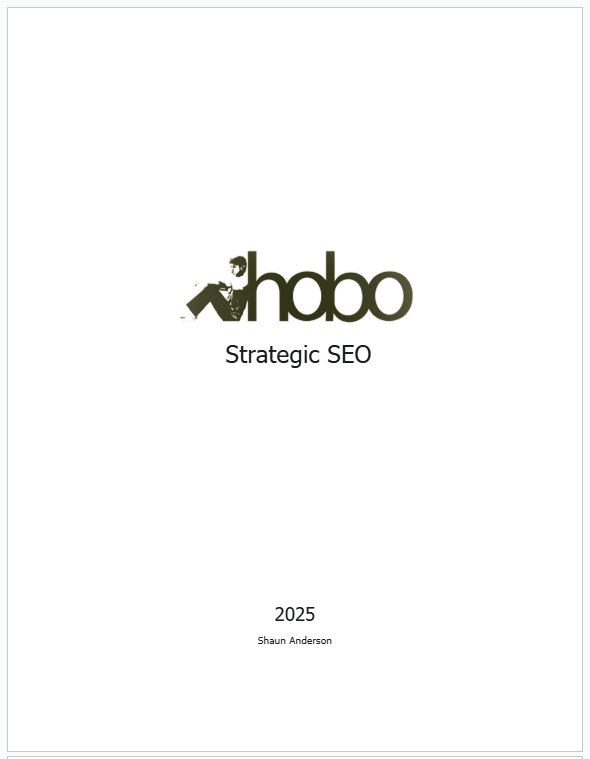
Recent leaks like the content warehouse data leak from inside Google have given us the clearest picture yet of how the search engine truly values digital content.
We were also told in the Google v. DOJ trial that “Most of Google’s quality signal is derived from the webpage itself,” so we know Google is looking at these things.
The key takeaway for business leaders is a concept we’ll call Content Effort, which originates from a technical attribute Google internally calls contentEffort.
This isn’t just another piece of marketing jargon; it’s a strategic imperative for future-proofing your brand’s digital authority and ROI.
What is The Content Effort Signal?
The contentEffort attribute, described as a “Large Language Model (LLM)-based effort estimation for article pages,” features in the leaked Google Content Warehouse Data leak.
The term contentEffort might be new, but the principle behind it is not.
For over a decade, the core SEO philosophy on this site has been built on a simple premise: the only sustainable way to survive and therefore succeed in Google search is to create the most genuinely helpful, high-effort resources for your audience. I’ve held that opinion after seeing sites torched by Penguin and Panda and a myriad of other Google algorithm updates.
I have long advised that shortcuts are a business risk and that true digital authority is earned, not tricked. Not if you care about your site.
The recent Google leaks didn’t present us with a new strategy; they provided internal validation of the strategy I (and SEOs like me) have been implementing for years.
I have firsthand experience advising those affected who reached out to me during Google’s recent volatile updates, particularly the Helpful Content Update (HCU). It is a monumental task to recover fully from an HCU hit with more casualties than success stories.
I’ve developed a playbook for recovery and growth that centres entirely on elevating a website’s overall Content Effort.
Therefore, this briefing isn’t just a reaction to the latest news. It is the culmination of years of practical, in-the-trenches experience, now powerfully corroborated by Google’s own internal terminology.
What is Google’s Content Effort Attribute?
From a business perspective, think of Content Effort as Google’s way of measuring your investment in a piece of content. It’s not just about what’s on the page, but the resources behind it.
When I worked as a Google Quality Rater, it was fairly easy to identify “Low-Effort” web pages – and raters are instructed to rate these pages lower. Now, we don’t know how, or even if Google is using this new LLM-powered contentEffort score, but your effort might now be scored by an AI!” Cyrus Shephard 2025
The analysis on Hobo Web clarifies this perfectly:
“The ‘effort’ is not just the words typed on a page. The effort is the expertise behind the words, the production effort, the originality of the information presented and the reputation of the website and author on which it is published.”
How Do You Increase Content Effort for SEO?
You increase Content Effort by shifting your content budget from volume to value. This means investing in original research, proprietary data, expert authors, and custom visuals. The goal is to create unique, defensible assets. True effort is about originality and demonstrable expertise:
“Effort is unique information, useful information, original images, original research, and it’s all published on a website with a demonstrable track record of publishing such content, written by a real expert.”
How Does the Google API Leak Explain Content Effort?
The leak of Google’s internal API documentation confirmed what experts have long suspected.
For leadership, the takeaway is simple: we now have verifiable proof that Google actively tracks signals related to the investment behind your content. This insight validates a strategic pivot away from chasing quantity and toward building a portfolio of high-quality, authoritative digital assets.
Is Content Effort a Direct Ranking Factor?
While Google never confirms its exact ranking factors, the connection is undeniable. The most prudent business strategy is to operate as if it is a primary factor for building long-term digital authority. In fact, I’ve argued they are one and the same:
“contentEffort IS the Helpful Content System (or a big part of it).”
How Does Content Effort Relate to E-E-A-T?
These two concepts are intrinsically linked. E-E-A-T (Experience, Expertise, Authoritativeness, Trust) is the outcome – it’s the trust you build with your audience and Google. Content Effort is the input – it’s the demonstrable investment you make to prove your expertise. I put it succinctly:
“The simplest way for Google to reward E-E-A-T is to have a system that can quantify the ‘effort’ that went into producing a piece of content.”
What Are Examples of High Content Effort?
High-effort assets are easily identifiable and hard to replicate.
Examples include a proprietary industry report, an interactive financial calculator, or a definitive guide with custom diagrams. These are not simple blog posts; they are valuable digital products that provide real-world usefulness.
I wrote:
“Google has a way to measure the ‘effort’ that has gone into a page and it has little to do with how many words are on the page, and everything to do with if the content has any utility value.”
How Does Google Calculate Content Effort?
The precise algorithm is a black box. However, the analysis suggests advanced AI is the driving force, capable of making qualitative judgments at a massive scale. I theorised how this is possible:
“My contention is Gemini is powering HCU. What is Gemini good at? It is a multi-modal AI that can understand text, images, video and audio. It can understand concepts… It is perfect for identifying what is, and what IS NOT, helpful content.”
What Are Actionable Strategies for Content Effort?
The strategy for leadership is twofold, mirroring portfolio management: new investments and asset divestment. This requires a fundamental shift in resource allocation, as the old model of cheap content is now obsolete. This has direct financial implications:
“This system has been designed to kill low-effort content and the entire industry built on providing it… The cost of content production just went up.”
Are There Tools to Measure Content Effort?
While there isn’t a simple automated software that outputs a “Content Effort” score, the answer is yes. A powerful tool now exists in the form of a structured, expert-level analysis prompt.
As detailed by my guide, “Rate My Page Quality Using The Hobo SEO Method,” a sophisticated prompt can be fed to an advanced AI (like Gemini or GPT-4) to create a powerful evaluation tool.
This method effectively “teaches” the AI to act as a quality rater, analysing a specific webpage against the core principles of E-E-A-T and the Helpful Content System. It provides a consistent framework for measuring the very signals of high effort – utility, expertise, originality, and trustworthiness – that we’ve discussed.
It is not a simple score, but a detailed, qualitative audit that provides actionable insights, moving the measurement of Content Effort from a purely subjective exercise to a structured, repeatable analysis.
What is the Future of Content Marketing?
This is the definitive shift from quantity to quality.
The future of content marketing belongs to brands that think and operate like media companies, creating a library of valuable, high-effort assets that form a competitive moat. This is how you win in the new era of AI-driven search and build a truly defensible digital brand.

Like this article – you will love the main deep dive: The ContentEffort Attribute, the Helpful Content System and E-E-A-T. Is Gemini behind the HCU?
Read next
Read my article that Cyrus Shephard so gracefully highlighted at the AHREFS Evolve 2025 conference: E-E-A-T Decoded: Google’s Experience, Expertise, Authoritativeness, and Trust.

The fastest way to contact me is through X (formerly Twitter). This is the only channel I have notifications turned on for. If I didn’t do that, it would be impossible to operate. I endeavour to view all emails by the end of the day, UK time. LinkedIn is checked every few days. Please note that Facebook messages are checked much less frequently. I also have a Bluesky account.

You can also contact me directly by email.
Disclosure: I use generative AI when specifically writing about my own experiences, ideas, stories, concepts, tools, tool documentation or research. My tool of choice for this process is Google Gemini Pro 2.5 Deep Research (and ChatGPT 5 for image generation). I have over 20 years writing about accessible website development and SEO (search engine optimisation). This assistance helps ensure our customers have clarity on everything we are involved with and what we stand for. It also ensures that when customers use Google Search to ask a question about Hobo Web software, the answer is always available to them, and it is as accurate and up-to-date as possible. All content was conceived, edited, and verified as correct by me (and is under constant development). Published on: 23 September 2025: See my AI policy.
